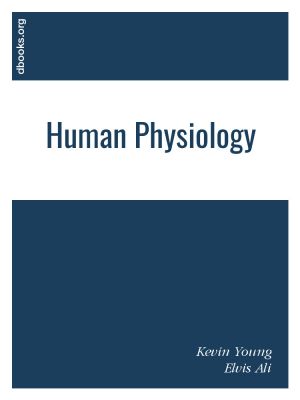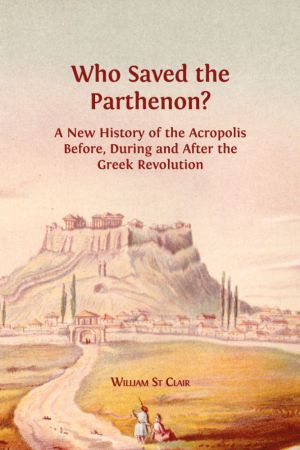Ancient Greek I
A 21st Century Approach
by Philip S. Peek
DescriptionTable of ContentsDetailsHashtagsReport an issue
The course is built on three pillars: memory, analysis, and logic. Readers memorize the top 250 most frequently occurring ancient Greek words, the essential word endings, the eight parts of speech, and the grammatical concepts they will most frequently encounter when reading authentic ancient texts. Analysis and logic exercises enable the translation and parsing of genuine ancient Greek sentences, with compelling reading selections in English and in Greek offering starting points for contemplation, debate, and reflection. A series of embedded Learning Tips help teachers and students to think in practical and imaginative ways about how they learn.
This combination of memory-based learning and concept- and skill-based learning gradually builds the confidence of the reader, teaching them how to learn by guiding them from a familiarity with the basics to proficiency in reading this beautiful language. Ancient Greek I: A 21st-Century Approach is written for high-school and university students, but is an instructive and rewarding text for anyone who wishes to learn ancient Greek. 






Book Description
In this elementary textbook, Philip S. Peek draws on his twenty-five years of teaching experience to present the ancient Greek language in an imaginative and accessible way that promotes creativity, deep learning, and diversity.The course is built on three pillars: memory, analysis, and logic. Readers memorize the top 250 most frequently occurring ancient Greek words, the essential word endings, the eight parts of speech, and the grammatical concepts they will most frequently encounter when reading authentic ancient texts. Analysis and logic exercises enable the translation and parsing of genuine ancient Greek sentences, with compelling reading selections in English and in Greek offering starting points for contemplation, debate, and reflection. A series of embedded Learning Tips help teachers and students to think in practical and imaginative ways about how they learn.
This combination of memory-based learning and concept- and skill-based learning gradually builds the confidence of the reader, teaching them how to learn by guiding them from a familiarity with the basics to proficiency in reading this beautiful language. Ancient Greek I: A 21st-Century Approach is written for high-school and university students, but is an instructive and rewarding text for anyone who wishes to learn ancient Greek.
This open book is licensed under a Creative Commons License (CC BY). You can download Ancient Greek I ebook for free in PDF format (10.7 MB).
Table of Contents
Module 1
The Greek Alphabet
Module 2
More Sounds and Punctuation
Module 3
Accents and Accenting Verbs I
Module 4
Adverbs
Module 5
Conjunctions and Accenting Verbs II
Module 6
Endings Create Meaning
Guest Feature 1
Stefan Hagel Teaches Us How to Sing
Module 7
Nouns, Pronouns, and their Case Functions
Module 8
Prepositions and Prefixes
Module 9
The Verb and μι-Verbs εἰμί, δίδωμι, τίθημι
Module 10
The Verbs ἔχω, ποιέω, ἔρχομαι, φημί
Module 11
The Definite Article and Persistent Accent
Module 12
ubstantive Adjectives and the Article
Module 13
Third Declension Nouns
Guest Feature 2
Tom Holland on the Art of Translating Herodotos
Module 14
First Declension Nouns in - η and -ᾱ and τίς, τί; τις, τι; ὅστις, ἥτις, ὅτι
Module 15
Attributive and Predicate Position
Module 16
Second Declension Nouns
Module 17
The Future Indicative and Infinitive Active of ἔχω, ἐλαύνω, ἔρχομαι and the Dynamic Infinitive
Module 18
The Personal Pronouns; εἷς, οὐδείς, and μηδείς; the Dative and Accusative of Respect; Time Expressions
Module 19
οἶδα and the Present and Future Indicative and Infinitive Middle and Passive of ἐλαύνω, καλέω, φέρω, δίδωμι, τίθημι
Guest Feature 3
Joe Goodkin, Singer and Songwriter
Module 20
First and Second Declension Adjectives and Common Adjectives and Pronouns: αὐτός, οὗτος, ὅδε, ἐκεῖνος, and -ων, -ουσα, -ον
Module 21
First Declension Short Alpha Nouns
Module 22
The Relative Pronoun
Module 23
The Imperfect and Aorist Indicative of λέγω, ἔχω, ἐργάζομαι, δίδωμι, τίθημι
Module 24
Contract Verbs
Module 25
The Infinitive in Indirect Statement and πρίν- and ὥστε-Clauses
Guest Feature 4
Amy R. Cohen on Performing and Translating Ancient Greek Drama
Module 26
Additional Common Adjectives: πᾶς, μέγας, πολύς, ἡδύς, ἀληθής, and -ᾱς, -ᾱσα, -αν
Module 27
Comparative and Superlative Adjectives and Adverbs; Dative of Degree of Difference
Module 28
εἰμί and εἶμι
Module 29
δείκνυμι and φημί
Guest Feature 5
Diane Rayor on Translating Sappho and Euripides
Module 30
ἵημι and ἵστημι
Book Details
Title
Ancient Greek I
Subject
Education and Teaching
Publisher
Open Book Publishers
Published
2021
Pages
640
Edition
1
Language
English
ISBN13
9781800642546
ISBN10
1800642547
ISBN13 Digital
9781800642560
ISBN10 Digital
1800642563
PDF Size
10.7 MB
License

Related Books

In Horos, Thea Potter explores the complex relationship between classical philosophy and the 'horos', a stone that Athenians erected to mark the boundaries of their marketplace, their gravestones, their roads and their private property. Potter weaves this history into a meditation on the ancient philosophical concept of horos, the foundat...

This open volume makes an important contribution to the ongoing research on hope theory by combining insights from both its long history and its increasing multi-disciplinarity. In the first part, it recognizes the importance of the centuries-old reflection on hope by offering historical perspectives and tracing it back to ancient Greek philosophy....

Physiology - The word physiology is from the Ancient Greek (phusiología) and it is the study of how organisms perform their vital functions. An example is the study of how a muscle contracts or the force contracting muscles exert on the skeleton. It was introduced by French physician Jean Fernery in 1552. Physiology is built upon a tripod of scien...

In this magisterial book, William St Clair unfolds the history of the Parthenon throughout the modern era to the present day, with special emphasis on the period before, during, and after the Greek War of Independence of 1821 - 32. Focusing particularly on the question of who saved the Parthenon from destruction during this conflict, with the help ...

This book demonstrates the application of simulation modelling and network analysis techniques in the field of Roman studies. It summarizes and discusses the results of a 5-year research project carried out by the editors that aimed to apply spatial dynamical modelling to reconstruct and understand the socio-economic development of the Dutch part o...

This book provides a global, chronological mapping of significant areas of theatre, sketched from its deepest history in the evolution of our brain's 'inner theatre' to ancient, medieval, modern, and postmodern developments. It considers prehistoric cave art and built temples, African trance dances, ancient Egyptian and Middle-Easter...

